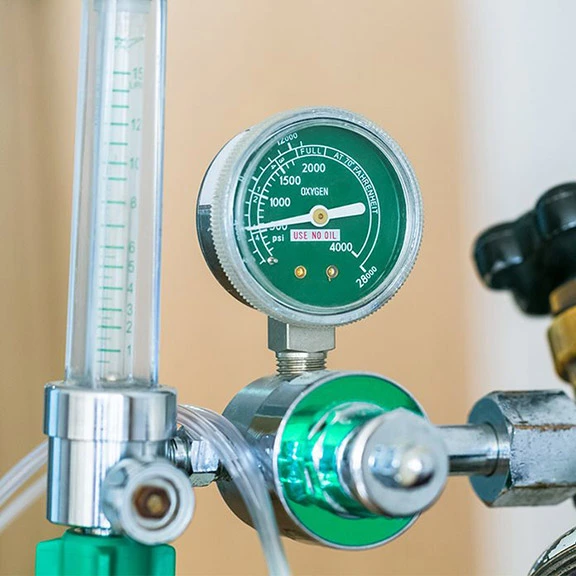Oxygen Therapy: Using Oxygen at Home
Learn how to use your oxygen unit safely at home.Here are some guidelines on safely using oxygen at home. Perform all steps each time you use your oxygen unit. The steps will vary depending on the type of oxygen unit you use.
Oxygen Home Use Guidelines
Step 1: Check Your Supply
- Wash your hands.
- Pressurize your compressed oxygen tank or turn on your portable oxygen concentrator (POC). Follow the instructions from your healthcare provider or medical supply company.
- Check the oxygen gauge on the tank to be sure you have enough.
- Your medical supply company will tell you when to call for more oxygen, or the company will deliver your oxygen on a regular schedule.
- Check the water level if you have a humidifier bottle. When the level is at or below half full, refill it with sterile or distilled water. Ask your medical supply company how often you should change your humidifier bottle. This is important to prevent germs.
Step 2: Attach the Tubing
- Attach the cannula tubing to your oxygen unit as you have been shown.
- Be sure the tubing is not bent or blocked.
Step 3: Set Your Flow Rate
- Set the oxygen to flow at the rate your healthcare provider gave you. Never change this rate unless your provider tells you to.
Step 4: Put the Cannula in Your Nose
- Wash your hands.
- Put the cannula in your nose and breathe through your nose normally.
- If you aren't sure oxygen is flowing, you can put the cannula in a glass of water. Oxygen is flowing if the water bubbles.
Step 5: Keep Your Equipment Clean
- Every week, wash you nasal cannula, clean your air filter and wipe the outside of your concentrator with soap and warm water.
- Every time you refill your humidifier bottle, wash it with soap and warm water, rinse well and refill with distilled water.
- Every 2-4 weeks, replace your cannula or mask. Change every time you get sick.
- Every month, replace your air filter.
- Every 2 months, replace your tubing.
- Every year, ask your oxygen supply company to service your concentrator.
- If you use a transtracheal catheter, ask your doctor how to clean it.
Step 6: Take Care of Yourself
- Keep your nose and lips moist with aloe vera or a water-based lubricant. DO NOT use oil-based products, like petroleum jelly.
- Ask your oxygen equipment provider for foam cushions to relieve pain behind your ears caused by the tubing.
- Tell your local fire department, electric and telephone companies that you use oxygen in your home. If you lose power in your home, they may restore it sooner, knowing you rely on oxygen.
- Tell your family, neighbors and friends that you use oxygen. They can help during an emergency.
- Call your doctor if: you are getting a lot of headaches; you feel nervous, agitated, drowsy or confused; your lips or fingernails turn blue; or you are having a hard time breathing.







